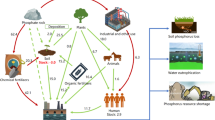Abstract
Biosorption is becoming an important component in the integrated approach to the treatment of aqueous effluents. The economics of biomass technical applications are improved by using waste biomass instead of purposely-produced biomass. Biomass derived from an alginate extraction industry –Sargassum sp. – was examined for its ability to function as a biosorbent for metals such as cadmium, zinc and copper. For use in column applications, biomass should be immobilized. To the algae reinforcement, the biomass was embedded in polyethleneimine (PEI), followed by glutaraldehyde crosslinking. Equilibrium Zn and Cu isotherms were analysed using the immobilization ratio that showed the best Cd performance. Either Freundlich or Langmuir models can describe the passive biosorption equilibrium of cadmium, zinc and cooper. The preference for this series of metals by the biomass was found to be Cd > Zn > Cu, with maximum uptake values of 157.8, 118.5 and 77.4 mg/g dry weight biomass for Cd, Zn and Cu. respectively. The metal binding capacity by non-living biomass is an important quality for industrial use.
Similar content being viewed by others
Author information
Authors and Affiliations
Additional information
Received: 17 March 1999
Rights and permissions
About this article
Cite this article
Valdman, E., Leite, S. Biosorption of Cd, Zn and Cu by Sargassum sp. waste biomass. Bioprocess Engineering 22, 171–173 (2000). https://doi.org/10.1007/PL00009109
Issue Date:
DOI: https://doi.org/10.1007/PL00009109




